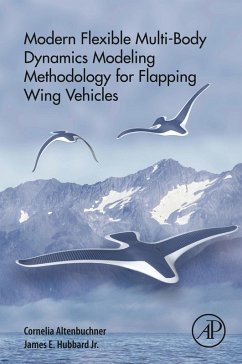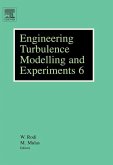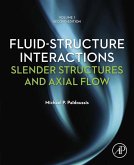Modern Flexible Multi-Body Dynamics Modeling Methodology for Flapping Wing Vehicles presents research on the implementation of a flexible multi-body dynamic representation of a flapping wing ornithopter that considers aero-elasticity. This effort brings advances in the understanding of flapping wing flight physics and dynamics that ultimately leads to an improvement in the performance of such flight vehicles, thus reaching their high performance potential. In using this model, it is necessary to reduce body accelerations and forces of an ornithopter vehicle, as well as to improve the aerodynamic performance and enhance flight kinematics and forces which are the design optimization objectives.
This book is a useful reference for postgraduates in mechanical engineering and related areas, as well as researchers in the field of multibody dynamics.
This book is a useful reference for postgraduates in mechanical engineering and related areas, as well as researchers in the field of multibody dynamics.
- Uses Lagrange equations of motion in terms of a generalized coordinate vector of the rigid and flexible bodies in order to model the flexible multi-body system
- Provides flight verification data and flight physics of highly flexible ornithoptic vehicles
- Includes an online companion site with files/codes used in application examples
Dieser Download kann aus rechtlichen Gründen nur mit Rechnungsadresse in A, B, BG, CY, CZ, D, DK, EW, E, FIN, F, GR, HR, H, IRL, I, LT, L, LR, M, NL, PL, P, R, S, SLO, SK ausgeliefert werden.
"This book presents rigorous techniques for modelling the multi-body dynamics problem in a flapping-wing vehicle as well as flexibility in the surfaces. A modern energy-based Lagrangian approach is used to derive the equations of motion. The formulation is suitable for extensions into the areas of stability analysis and control design." --The Aeronautical Journal
"This is a useful test for academics, students and hobbyists interested in studying and building flapping-wing vehicles. Though the aerodynamic models employed here are quite basic, the dynamical model is general enough that more complex aerodynamic models can easily be substituted. This could pave the way to a better understanding of the flow physics and active/passive flow control mechanisms in biological flight." --The Aeronautical Journal
"This is a useful test for academics, students and hobbyists interested in studying and building flapping-wing vehicles. Though the aerodynamic models employed here are quite basic, the dynamical model is general enough that more complex aerodynamic models can easily be substituted. This could pave the way to a better understanding of the flow physics and active/passive flow control mechanisms in biological flight." --The Aeronautical Journal









